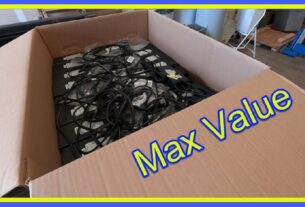In the consistently developing universe of innovation, similarity among equipment and programming is significant for a consistent client experience. Bell SA, a broadly utilized programming application, is no exemption from this standard. Whether you’re utilizing Windows, macOS, Linux, or other working frameworks, it’s fundamental to comprehend whether Bell SA is viable with your foundation of decision. In this article, we will investigate the similarity of Bell SA with different working frameworks to assist you with pursuing an educated choice.
Bell SA Overview
Before digging into similarity subtleties, we should initially comprehend what Bell SA is. It means “Ringer Framework Examination,” and it is a flexible programming device essentially utilized for framework investigation, demonstration, and reenactment. It offers a scope of highlights and capacities that are significant to designers, specialists, and experts in different enterprises. Its capacity to display complex frameworks, perform recreations, and dissect information makes it an imperative device in fields like broadcast communications, designing, and then some.
Compatibility with Windows
Windows, being one of the most well-known working frameworks internationally, is an essential decision for some clients. Luckily, Bell SA is viable with Windows, making it open to a tremendous client base. You can run Bell SA on different Windows variants, including Windows 7, Windows 8, Windows 10, and Windows 11. Whether you’re utilizing a PC or PC, you can expect a smooth establishment process and dependable execution while running Bell SA on a Windows framework.
Also, Bell SA offers both 32-digit and 64-cycle renditions, guaranteeing similarity with more established equipment designs and present-day laptops. This adaptability permits clients with various Windows arrangements to use the product.
Compatibility with macOS
On the off chance that you’re a Macintosh client, you might be contemplating whether Bell SA can run on macOS. While Bell SA is essentially intended for Windows, there are ways of running it on a Macintosh framework. One normal technique is through virtualization programming or double booting, which permits you to establish a Windows climate on your Macintosh and introduce Bell SA inside it. Famous virtualization programming choices incorporate Equals Work area, VMware Combination, and Training camp for double booting.
While this workaround empowers Macintosh clients to get to Bell SA, it may not give a similar degree of execution and incorporation as running the product locally on a Windows machine. In any case, with the right arrangement and adequate equipment assets, Bell SA can be an important device for Macintosh clients.
Compatibility with Linux
Linux clients frequently require particular programming for their work, and Bell SA’s similarity with Linux is a basic thought. Tragically, Bell SA doesn’t offer local help for Linux. Be that as it may, there are ways of running Bell SA on Linux frameworks.
One methodology is to utilize similarity layers like Wine, which permits Windows applications to run on Linux. Wine has taken huge steps in further developing similarity throughout the long term, and numerous clients have announced the outcome of running on Linux through this technique. In any case, the experience may not be as consistent as on local Windows frameworks, and a few elements may not work impeccably.
On the other hand, you can investigate virtualization choices or double-booting with Linux as you would with macOS. These techniques can give a more dependable climate to running on a Linux machine.
Compatibility with Other Operating Systems
Aside from the major working frameworks referenced above, there are a few specialty and particular working frameworks utilized in different enterprises and examination conditions. Tragically, it doesn’t offer local similarity with these less popular working frameworks. Clients of such frameworks might have to depend on virtualization, similarity layers, or double booting to get to it.
Considerations for Cross-Platform Compatibility
While utilizing Bell SA across various working frameworks, taking into account a couple of factors is fundamental:
- Hardware Requirements: Guarantee that your equipment meets the base prerequisites for running on your picked working framework. This incorporates computer chip, Slam, and capacity determinations.
- Performance: Running it on a non-local working framework might bring about diminished execution. Be ready for potential execution contrasts, and designate adequate assets assuming that you settle on virtualization or double booting.
- Updates and Compatibility Layers: Keep your working framework and similarity layers (like Wine) forward-thinking to amplify similarity and limit expected issues.
- Support and Community Resources: Check for client gatherings, networks, or backing channels connected with running it on your picked working framework. These assets can be significant for investigating and getting help.
Conclusion
In synopsis, this is fundamentally viable with Windows, making it open to an expansive client base. For macOS and Linux clients, there are workarounds accessible, like virtualization, double booting, or utilizing similarity layers like Wine, to run it. While these techniques may not offer a similar degree of execution and reconciliation as local Windows establishments,




